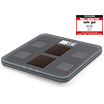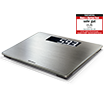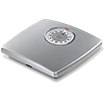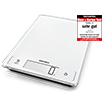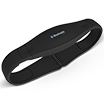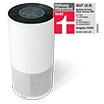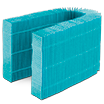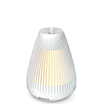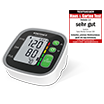Frequently Asked Questions (FAQ) - Airfresh general
Airfresh general
- What is CADR?
CADR is the abbreviation for Clean Air Delivery Rate, a performance index for air purifiers, which facilitates the comparisons between the various models easier. It is given in cubic feet per minute (CFM) and describes how many particles between 0.09 µm and 11.0 µm are removed from the air within one minute. The performance index is standardised to a room size of 28.5 m³.
- What are VOCs?
Volatile organic compounds (abbr. VOC) is a collective term for substances containing carbon that evaporate easily and/or present as gases even at low temperatures (e.g., room temperature). Possible sources of VOCs in inside spaces are construction products or interiors such as floors, walls and ceiling materials, paints, coatings, adhesives and furniture. The volatile organic compounds get into the air in the room when solvents evaporate and liquid or paste-like products dry. They can also stem from solid products, for example, from plastics or terpenes from wood. VOCs are also released by toiletries, disinfectants, cleaning products and hobby products, or cigarette smoke. Above all, increased VOC concentrations can occur following the construction and renovation and/or refurbishing of buildings, as well as unprofessional workmanship or the use of unsuitable products.
- What is PM2.5?
Dust fractions are designated as fine dust (PM2.5) where 50% of particles have a diameter of 2.5 µm (microns). Particles of this size can end up in the heart's pulmonary alveoli. They are at most the size of bacteria and are therefore not visible to the naked eye. The easily visible dust, such as what you would find on a construction site or from grit spreading, is for the most part made up from coarse dust. Health implications: A current assessment of the health implications of fine dust carried out by the World Health Organisation (WHO) has clearly shown that there is a connection between an increased exposure to PM2.5 and health implications (e.g., cardiovascular diseases). This can lead to a significant reduction in a person’s life expectancy.
- What can be done against the smell of stale smoke?
An air scrubber or air purifier is suitable for getting rid of the smell of stale smoke. To get rid of tough tobacco smells, the device must be left on overnight on the highest setting. You will then be able to breathe in clean air again the following morning.
- What is ECARF?
The ECARF seal of quality is a certification mark/seal of approval from the European Centre for Allergy Research Foundation, based at the Charité in Berlin, with the aim of making it easier to select allergy-friendly products and services. The high-quality filters from the Airfresh range were tested by an external institute and have been demonstrated to remove all types of allergens from the air.
- What are the effects of dry air?
- Dry, heated air leads to dry mucous membranes. These dry membranes are unable to catch bacteria and viruses, leading to an increased risk of infections, colds and allergic respiratory diseases
- Breathing in dry air makes the intake of oxygen and its subsequent transfer to the blood system more difficult. Symptoms of fatigue, headaches and reduced levels of concentration may occur as a result
- Wooden furniture, wood floors and musical instruments show signs of cracks in dry room air
- To achieve the level of humidity recommended by doctors (approx. 45–55%), a heated room of 30 m² will require around 5 litres of water per day
-Bowls on radiators are far too small and have been proven to be unhygienic - What should you look for when buying an air purifier?
When buying an air purifier, there are three elementarily important criteria to consider: the volume flow, a high-quality filter and the noise level.
The air flow rate defines the performance of the air purifier. A powerful air purifier should filter at least six times the room volume per hour to effectively remove viruses. The quality of the filter is also an important aspect. When used for virus reduction, filters of class H13 or higher are recommended, which manage to filter out all aerosol particles containing viruses.
Finally, the noise aspect should be taken into consideration, because an air purifier that is too quiet may mean that its performance is too low. - Are air purifiers better than ventilation?
If an air purifier comply with the three elementally important criteria, it could be better than ventilation.
For a brisk exchange of air, there would be a large temperature difference between inside and outside or a strong wind blowing needed.
As soon as the window is open for a long period of time, the indoor temperature adjusts to the outdoor temperature and air exchange no longer takes place properly.
An air purifier, on the other hand, works continuously regardless of the temperature and thus cleans the indoor air reliably.
Since an air purifier alone cannot guarantee a supply of fresh air, we recommend using air purifiers in addition to regular shock ventilation. - How to properly ventilate the room?
We recommend "shock ventilation" several times a day. Always open windows significantly reduce the cleaning effect, as particles such as allergens and pollutants keep coming in through the window.
- How do I protect myself and my guests at home?
Especially for private use at meetings with relatives and friends, the use of an air purifier is recommended. The air purifiers from Soehnle do not necessarily have to be operated continuously. Just a few hours of operation per day will ensure efficient cleaning of the air in the room. If a meeting with several friends is planned, the power level of the device should be increased for the duration of the visit. Although this will increase the volume somewhat, the health of those present is certainly worth it.

